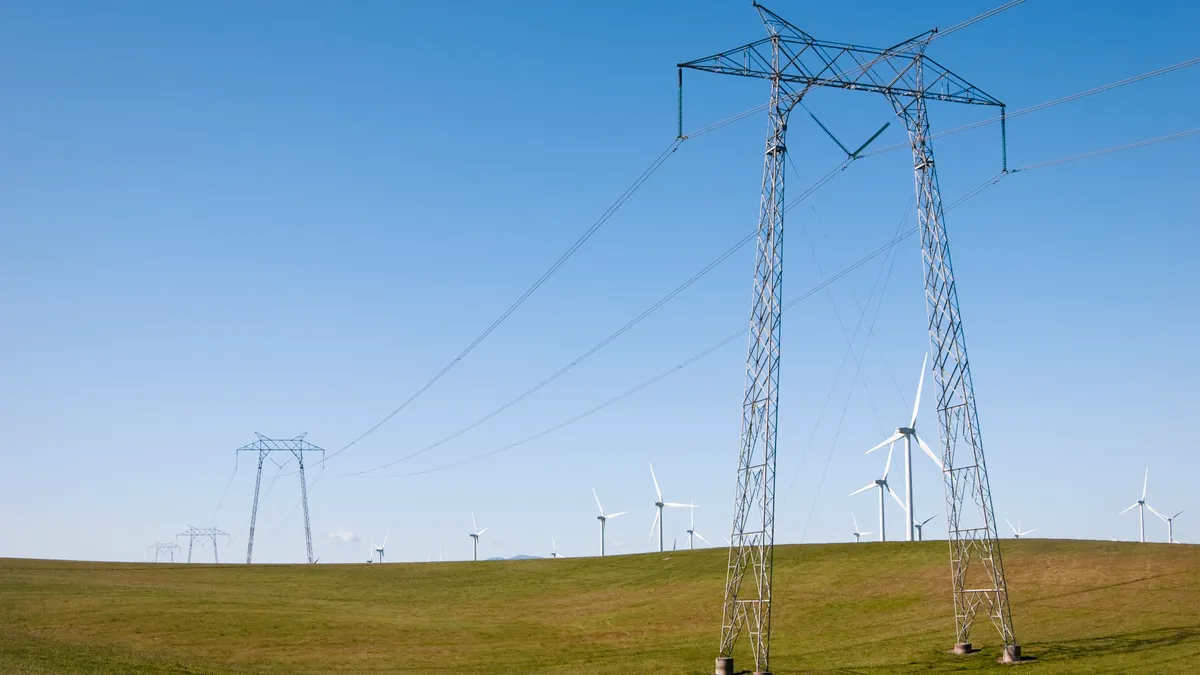Dive Brief:
- Southern California Edison is positioned to make substantial investments in the resilience and reliability of its electrical grid and is well prepared for California’s wildfire season thanks to efforts to strengthen and prepare its infrastructure, Pedro Pizarro, president and CEO of parent company Edison International, said during the company’s second-quarter earnings call Thursday.
- From 2025 through 2028, SCE projects annual capital deployment of around $8 billion — double what it was six years ago — with over 85% of its investments going into the distribution grid, Maria Rigatti, Edison International’s executive vice president and chief financial officer, said on the call.
- On the wildfire mitigation front, SCE has replaced almost 5,000 circuit miles of bare overhead wires with covered conductor at a rate of about 100 miles of replacement per month, Pizarro said. Because of this and other measures, “in 2021 and 2022 there were 98% fewer structures destroyed and 92% fewer acres burned than in 2017 and 2018,” Pizarro said.
Dive Insight:
Edison International reported $354 million in Q2 net income compared with about $241 million in the second quarter of 2022.
The 2025 through 2028 period “will be critical to achieving California's 2030 and 2045 climate goals,” Pizarro said.
The company is confident in its 5% to 7% earnings-per-share growth rate guidance from 2021 through 2025, Rigatti said, and it expects to continue this rate from 2025 through 2028. This is partly due to strong rate base growth and partly because some of the headwinds the company has faced over the last couple of years are projected to stabilize by 2025.
These headwinds include the cost of financing wildfire claims payments — partially due to higher interest rates — and a reduction by the California Public Utilities Commission of its return on equity, Rigatti said.
In a general rate case application with the CPUC in May, SCE asked for a $10.3 billion base revenue requirement for 2025 — a 23% increase over its 2024 requested revenue requirement — followed by increases of roughly $600 million, $700 million and $700 million, respectively, in 2026, 2027 and 2028.
SCE will use the funding to, among other things, repair and replace grid infrastructure, protect against wildfires, and deploy equipment and software tools to make the grid more reliable, SCE said in a fact sheet.
A recently approved transmission plan from the California Independent System Operator contains 17 transmission projects, totaling $2.3 billion, in SCE’s footprint, according to Rigatti. The system operator also has identified Southern California projects worth $3 billion that SCE can compete for.
Company officials also touched on the utility’s progress with wildfire mitigation in its service territory. SCE has anticipated spending around $5.8 billion on these efforts, and it says it has reduced the probability of fires caused by its equipment by 80% in the last five years.
SCE’s experience with wildfire mitigation has shown that insulating overhead power lines is a quick and cheap option to prevent utility-caused fires, according to Mark Toney, executive director of ratepayer group The Utility Reform Network.
On other hand, TURN has concerns about the revenue requirement increase that SCE is requesting as part of its general rate case application.
“We cannot solve the climate crisis exclusively on the backs of electricity customers because it’s the most regressive way to fund climate change [action]. We need to look for things like income tax, and state and federal funds, that have a more fair distribution of who pays,” Toney said.














